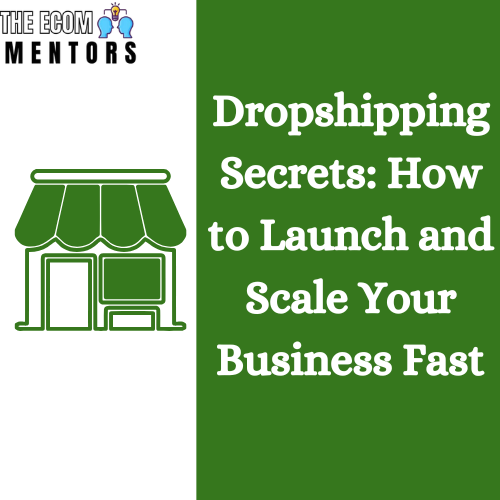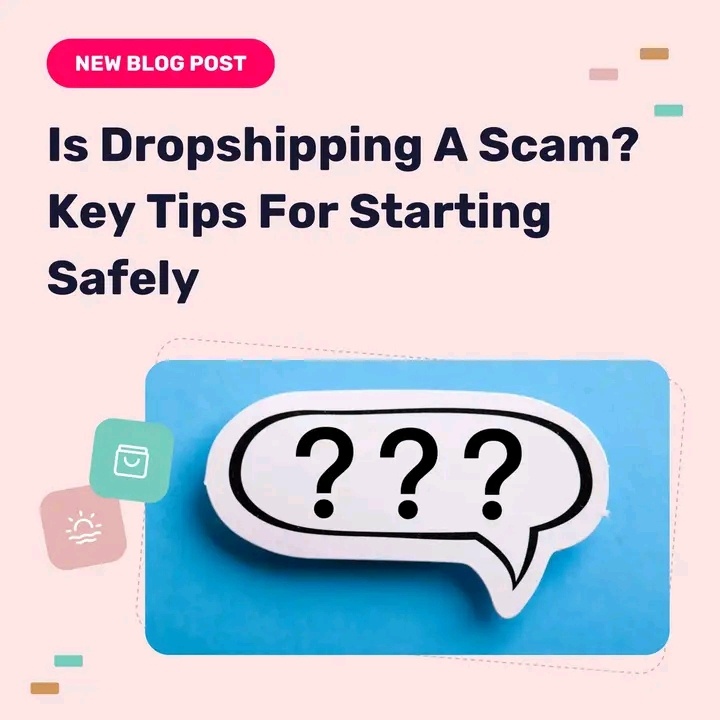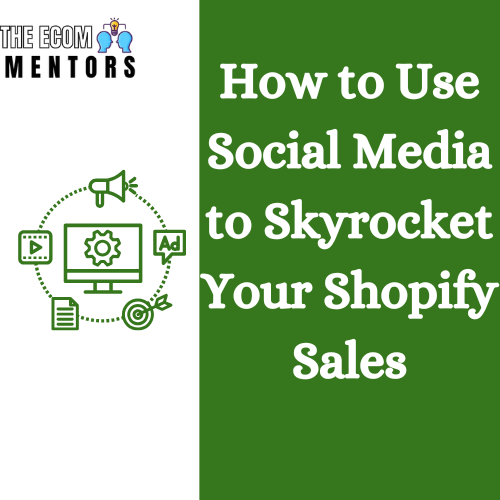The Ultimate Guide to Launching a Successful Dropshipping Store with Shopify
Dropshipping is one of the most accessible ways to start an e-commerce business today—and when combined with the power of Shopify, it's a winning formula for aspiring entrepreneurs. But while the barriers to entry are low, launching a profitable dropshipping store takes strategy, execution, and a clear plan.
In this ultimate guide, we'll walk you through everything you need to know to se.png?width=500&height=500&name=Dropshipping%20Secrets%20How%20to%20Launch%20and%20Scale%20Your%20Business%20Fast%20(1).png) t up, launch, and scale a successful Shopify dropshipping store in 2025.
t up, launch, and scale a successful Shopify dropshipping store in 2025.
🚀 What Is Dropshipping?
Dropshipping is a retail fulfillment method where you don’t keep inventory in stock. Instead, when a customer places an order, the product is shipped directly from your supplier to the customer. This means:
-
Low startup costs
-
No need for inventory management
-
Flexibility to run your store from anywhere
Shopify is the go-to platform for dropshipping because of its ease of use, app integrations, and scalable features.
🛠 Step 1: Choose a Niche That Sells
Your niche will define your store’s success. Choose something with demand, profit potential, and products that solve a problem or fulfill a passion.
Tips for Finding a Winning Niche:
-
Look for evergreen products (e.g., fitness, pets, beauty).
-
Avoid broad categories—go specific (e.g., not "fitness" but "home workout gear").
-
Use tools like Google Trends, AliExpress Dropshipping Center, and Exploding Topics to spot trends.
🧩 Step 2: Find Reliable Dropshipping Suppliers
Your supplier is the backbone of your business. Unreliable shipping or poor product quality can hurt your reputation fast.
Recommended Supplier Platforms:
-
DSers (AliExpress) – Official Shopify partner
-
Spocket – Fast shipping from U.S. & EU suppliers
-
CJ Dropshipping – Offers branding and warehousing
-
Zendrop – Beginner-friendly with automation features
Key Factors When Choosing:
-
Shipping times and locations
-
Product quality and reviews
-
Communication responsiveness
🛒 Step 3: Set Up Your Shopify Store
Now that you have a niche and supplier, it’s time to build your storefront.
Key Setup Tasks:
-
Choose a professional theme: Shopify’s free themes like Dawn work well for dropshipping.
-
Add your products using the supplier app (e.g., DSers).
-
Write compelling product descriptions that sell benefits, not just features.
-
Set up essential pages: Home, About, Contact, FAQ, and Shipping Policy.
💳 Step 4: Set Up Payment and Checkout
Shopify makes it easy to accept payments, but make sure everything is tested and smooth.
-
Use Shopify Payments, PayPal, and Apple Pay for flexibility.
-
Enable abandoned cart recovery to win back lost sales.
-
Test the checkout experience from start to finish on mobile and desktop.
📦 Step 5: Launch With a Marketing Plan
Your store is ready—but customers won’t just show up. You need a plan to drive traffic and convert it.
Fast-Track Marketing Channels:
-
Facebook & Instagram Ads: Great for visually appealing, trending products.
-
TikTok Organic + Ads: Viral content can skyrocket a new dropshipping product.
-
Influencer marketing: Partner with micro-influencers for affordable exposure.
-
Email marketing: Set up welcome emails, cart recovery, and product promos.
Pro Tip:
Use UGC-style creatives (user-generated content) in your ads—they convert much better than polished product photos.
📈 Step 6: Track Performance and Optimize
Once your store is live, the real work begins: testing, tweaking, and improving.
What to Monitor:
-
Conversion rate (aim for 2–3%+)
-
Cost per acquisition (CPA)
-
Profit margins
-
Top-performing products and creatives
Use Shopify Analytics, Google Analytics, and your ad platform dashboards to gather insights and scale what works.
🔁 Step 7: Automate and Scale
Once you start generating consistent sales, it’s time to automate and grow.
Scaling Tips:
-
Use automation tools for order fulfillment, email marketing, and retargeting.
-
Outsource customer service once order volume grows.
-
Consider bundling products, offering upsells, and increasing average order value (AOV).
If a product gains serious traction, consider transitioning to private labeling or branded packaging for a more premium experience.
🧠 Final Thoughts: Dropshipping in 2025
Dropshipping isn’t dead—it’s evolving. In 2025, success comes from building real brands, offering great customer experiences, and leveraging smart marketing. The low-barrier approach may get you in the game, but only those who treat it like a business will thrive.
✅ Need Help Launching Your Shopify Dropshipping Store?
At The Ecom Mentors, we specialize in helping entrepreneurs launch high-converting Shopify stores with proven dropshipping strategies, done-for-you store setups, and expert marketing support.
👉 Book a free consultation to kickstart your journey today.



